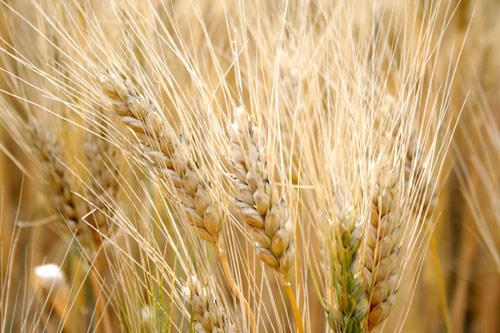Farmers were able to get some combining done during the week, however, by the weekend, the rain set in again, slowing harvest progress. Farmers in the southeast area made good harvest progress at the beginning of the week and have 14 per cent of the crop combined and 30 per cent of the crop swathed or ready to straight-cut.On a provincial basis, eight per cent of the 2010 crop has been combined and an additional 22 per cent is swathed or ready to straight-combine, according to the Saskatchewan Agricultures weekly crop report.The five-year provincial average (2005-2009) for this time of year is 28 per cent combined and 25 per cent swathed or ready to straight-combine.I have swathed canola this year and Im three quarters done. It will be a below-average crop because of damage from excess moisture. I have also combined one quarter of durum wheat and Im half-done the two quarters I put in, said Brian Goranson, a farmer in the Ralph area.He added that his durum crop is doing well and the yield will be in the mid 30s per acre.Dean Nikolejsin, a farmer in the Cedoux area, has done some combining and swathing. Ive swathed and combined canola and thats the only type of crop Ive done. The canola crop looks good but there is a lot more drown-out than I first thought but the yields are looking good, he said.Wayne Vilcu, a farmer from the Halbrite area, has just started swathing spring wheat and combining rye. The spring wheat is an average crop and the rye is looking fairly well and is running well, he said.Crop damage is mostly attributed to wind, lodging and windblown swaths, rain and flooding. There has been hail damage on the canola and canary seed crops of mine. There was a lot of damage to the canary seed and less damage on the canola crop, said Nikolejsin.The strong wind in some areas last week caused some canola, pea and hay swaths to blow around. I have 10 per cent of hail damage to my crops. There is also flooding damage but at this point its hard to estimate the damage because I have swathed areas and there are heads but nothing in the heads. Its hard to say at this point, declared Vilcu.Many crop reporters are having difficulty assessing yields at this time due to crop immaturity, flooded areas and disease. Its too early to tell what the yields would be; probably the best crops in terms of yield would be winter wheat and fall rye, because these two crops are 80 per cent harvested, explained Elaine Moats, crop specialist from the Weyburn regional office.Winter wheat yields are at 50 bushels per acre and fall rye is a few bushels less; these are crops that by their nature mature early. Peas have made a good advance because they were seeded first thing this spring and are at 60 per cent combined. Depending on how much got flooded out, the pea yield is at 30 bushels per acre, added Moats.The average yields for the region are as follows: winter wheat is 50 bushels per acre; spring wheat, 34 bu/ac; durum, 32 bu/ac; oats, 65 bu/ac; barley, 51 bu/ac; fall rye, 48 bu/ac; flax, 20 bu/ac; canola, 28 bu/ac; mustard, 880 pounds per acre; lentils, 1,100 lb./ac; peas, 30 bu/ac; canaryseed, 1,400 lb./ac; and chickpeas, 1,200 lb./ac.Moats said that the lentil yields in the southeast area are at 20 bushels per acre and that producers are concerned about the lentil and pea crops because they have been rated as number one, as well, the quality has also been downgraded.Many areas are still one to two weeks behind normal crop development and the wet fields are causing problems with harvesting equipment. Vilcu said, I hope by the end of the week to be back in the field, but its hard to say at this point because were suppose to get more rain.Haying has essentially finished in the region and farmers are cutting greenfeed crops. In other regions, haying is also wrapping up. The unsettled weather has extended the haying season for Saskatchewan farmers.Both Vilcu and Goranson have talked to hay farmers and have both been told that the hay crops have been extremely good and the best in years, but they have had trouble getting it off which has been the same problem for all producers this year.The cropland topsoil moisture is rated as 41 per cent surplus, 58 per cent adequate and one per cent short. For the first time in my life I got stuck while swathing canola, so its as wet as it can be, claimed Goranson. Topsoil moisture on hay land and pasture is rated as 19 per cent surplus, 78 per cent adequate and five per cent short.The amount of rain falling on the region ranged from nil to 110 mm. The majority fell on Aug. 29 and 30. The Fillmore and Griffin areas had 35 mm and the Ceylon area 36 mm. Most areas reported more than 20 mm of rain.
